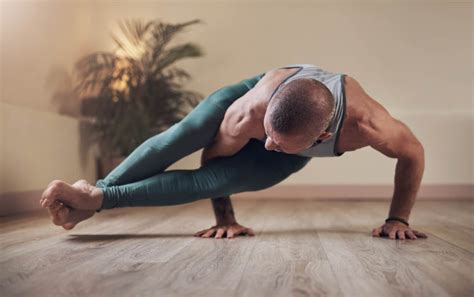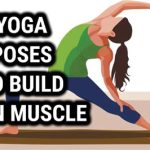Unlocking Muscle Strength Through Yoga: Can It Really Work?
Yoga is typically associated with flexibility, balance, and mental well-being, but can it also help you build muscle strength? For those seeking a comprehensive approach to fitness, this is a crucial question. In this article, we’ll explore the potential of yoga as a muscle-strengthening practice. By examining key concepts, historical context, current research, case studies, and more, we aim to provide a detailed analysis of how yoga may contribute to muscle development. We will also address common misconceptions, ethical considerations, and potential limitations, offering a balanced, research-backed perspective.
Key Concepts: Understanding Strength in Yoga
When we talk about muscle strength, we refer to the ability of a muscle group to exert force. Unlike traditional weightlifting, which uses external resistance, yoga relies on bodyweight as resistance. Through various postures, or asanas, practitioners engage multiple muscle groups. Poses such as Plank, Chaturanga, and Warrior create isometric holds and dynamic movements that target core, upper, and lower body strength.
Types of Strength Yoga Can Build
- Isometric Strength: Holding poses like Plank or Chair pose engages muscles statically, increasing endurance and control.
- Dynamic Strength: Flowing from one pose to another, such as in Vinyasa sequences, requires controlled muscular contractions, building dynamic strength.
- Balance-Based Strength: Poses like Tree and Warrior III challenge the stabilizing muscles, enhancing functional strength.
Historical Context: The Evolution of Yoga and Strength Training
While yoga has ancient roots in Indian culture, its emphasis on physical strength is relatively modern. Traditionally, yoga focused more on meditation and spiritual practices. However, with the rise of fitness-centric yoga styles like Power Yoga and Ashtanga, the connection between yoga and strength development has gained prominence.
Yoga’s Shift Towards Physicality
In the early 20th century, yoga masters like Tirumalai Krishnamacharya began emphasizing the physical aspects of yoga, integrating postures that engaged and strengthened muscles. Over the years, Western adaptations of yoga have continued this trend, with modern styles now being practiced as a form of exercise that complements traditional strength training methods.
Current State Analysis: Does Yoga Build Muscle?
Research indicates that yoga can indeed contribute to muscle strength, although it may not be as effective as resistance training for maximal hypertrophy. However, its benefits lie in its holistic approach, which integrates strength with flexibility, balance, and mental focus.
Studies Supporting Strength Development
A 2016 study published in the journal Complementary Therapies in Medicine found that participants who practiced yoga three times a week for eight weeks demonstrated significant gains in upper body and core strength compared to a control group. Similarly, a 2017 study in the Journal of Sports Medicine and Physical Fitness observed improvements in both strength and flexibility in participants following a 12-week yoga regimen.
Areas Where Yoga Excels
- Core Strength: Yoga’s emphasis on alignment and balance significantly engages the core muscles.
- Stabilization: Poses like Side Plank, which require sustained balance, build stabilizing muscles often neglected in traditional strength training.
- Functional Strength: Unlike isolated exercises, yoga works on multiple muscle groups, contributing to functional strength that’s applicable in daily activities.
Practical Applications: Incorporating Yoga Into Strength Training
Yoga can be a valuable complement to other forms of exercise, especially for those looking to balance strength with mobility and flexibility. Incorporating yoga into a traditional strength training routine may help enhance recovery, improve joint stability, and reduce injury risk.
How to Add Yoga to Your Routine
- Recovery Days: Use yoga on rest days to aid muscle recovery while still engaging in active movement.
- Pre-Workout Mobility: A short yoga sequence before lifting can improve range of motion and activate stabilizing muscles.
- Post-Workout Stretching: Yoga postures help cool down muscles after heavy lifting and promote flexibility.
Case Studies: Real-World Experiences
Let’s look at how yoga has impacted strength development in different individuals. The following table outlines case studies where yoga was integrated into different training routines:
| Case Study | Background | Strength Results |
|---|---|---|
| Case 1: The Powerlifter | Added two yoga sessions per week for improved flexibility and injury prevention. | Reported better recovery and joint stability; marginal improvement in core strength. |
| Case 2: The Office Worker | Began practicing yoga for stress relief and bodyweight exercise. | Noticed significant gains in core strength and overall balance after 12 weeks. |
| Case 3: The Athlete | Used yoga as part of a recovery protocol post-competition. | Improved flexibility, leading to better athletic performance and reduced injury risk. |
Stakeholder Analysis: Who Benefits from Strength-Building Yoga?
Yoga’s unique blend of strength and flexibility training appeals to a diverse group of stakeholders, each with different motivations and needs.
- Fitness Enthusiasts: Those seeking a balanced approach to fitness, incorporating both strength and flexibility, find yoga appealing as it provides an alternative to repetitive weightlifting routines.
- Rehabilitation Patients: People recovering from injuries often use yoga as a low-impact method to rebuild muscle strength while avoiding further damage.
- Older Adults: Yoga offers a gentle form of strength training, which is beneficial for maintaining muscle mass and balance in aging populations.
- Athletes: Yoga enhances stability and mobility, both of which are critical for peak athletic performance.
Implementation Guidelines: How to Get Started with Strength-Building Yoga
For beginners and experienced athletes alike, starting a yoga practice for strength development can be simple with a structured approach. Here are some guidelines to help you integrate yoga into your routine:
- Choose the Right Style: Opt for yoga styles that emphasize strength, such as Power Yoga, Vinyasa, or Ashtanga.
- Frequency: Aim for at least three sessions per week, lasting 45-60 minutes each, to see noticeable strength gains.
- Progression: Start with basic postures and gradually increase the duration of isometric holds and the difficulty of the poses.
- Balance Strength with Flexibility: Incorporate poses that challenge strength while simultaneously improving flexibility, such as Warrior and Tree poses.
Ethical Considerations: Is Yoga a Sustainable Fitness Solution?
Yoga is generally seen as an accessible and inclusive practice. However, certain ethical questions arise, such as its commercialization in Western societies and the risk of cultural appropriation. Additionally, individuals with physical limitations may find some poses difficult or unsafe, necessitating the adaptation of certain movements.
Commercialization and Authenticity
As yoga has become more popular in the fitness world, it has shifted away from its traditional roots, sometimes leading to debates about authenticity. Ensuring that yoga is practiced with respect for its origins while adapting it to modern needs is an ongoing challenge.
Limitations and Future Research
While yoga offers numerous benefits, there are limitations to its effectiveness as a sole method for building muscle strength. Traditional resistance training may still be more effective for those seeking maximum hypertrophy. Further research could explore the long-term effects of yoga on muscle hypertrophy, especially in comparison with other strength training methods.
Future Research Directions
- Comparing strength gains from yoga vs. traditional weightlifting over longer periods.
- Investigating the specific role of yoga in injury prevention for athletes and older adults.
- Exploring the integration of yoga into physical rehabilitation programs for muscle recovery.
Expert Commentary
Experts agree that while yoga may not replace traditional strength training entirely, it offers a valuable complement, especially for core strength and flexibility. Yoga’s focus on balance and muscle endurance creates a well-rounded strength-building practice that can help prevent injuries and enhance overall physical health.








